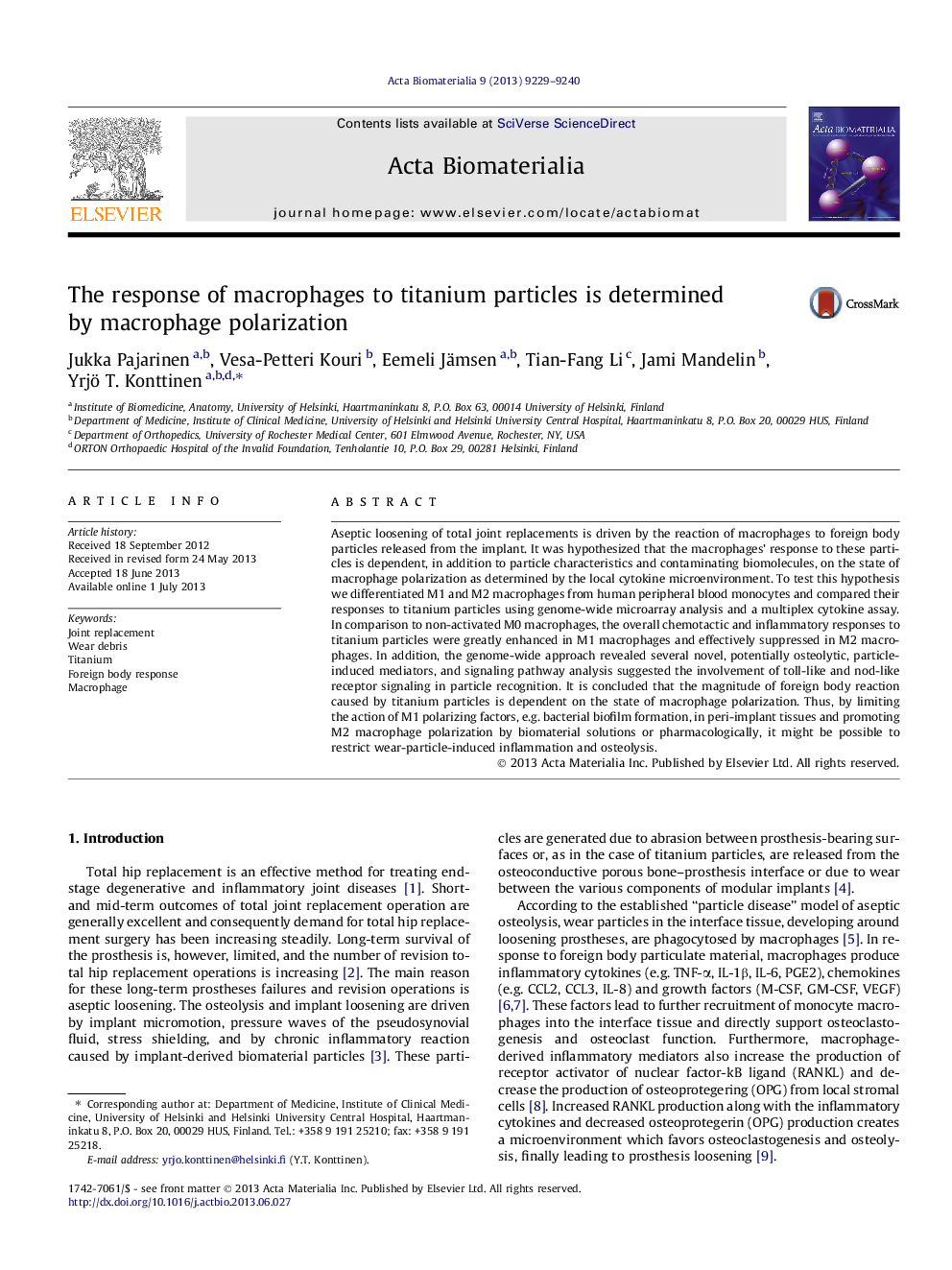| Article ID | Journal | Published Year | Pages | File Type |
|---|---|---|---|---|
| 10159519 | Acta Biomaterialia | 2013 | 12 Pages |
Abstract
Aseptic loosening of total joint replacements is driven by the reaction of macrophages to foreign body particles released from the implant. It was hypothesized that the macrophages' response to these particles is dependent, in addition to particle characteristics and contaminating biomolecules, on the state of macrophage polarization as determined by the local cytokine microenvironment. To test this hypothesis we differentiated M1 and M2 macrophages from human peripheral blood monocytes and compared their responses to titanium particles using genome-wide microarray analysis and a multiplex cytokine assay. In comparison to non-activated M0 macrophages, the overall chemotactic and inflammatory responses to titanium particles were greatly enhanced in M1 macrophages and effectively suppressed in M2 macrophages. In addition, the genome-wide approach revealed several novel, potentially osteolytic, particle-induced mediators, and signaling pathway analysis suggested the involvement of toll-like and nod-like receptor signaling in particle recognition. It is concluded that the magnitude of foreign body reaction caused by titanium particles is dependent on the state of macrophage polarization. Thus, by limiting the action of M1 polarizing factors, e.g. bacterial biofilm formation, in peri-implant tissues and promoting M2 macrophage polarization by biomaterial solutions or pharmacologically, it might be possible to restrict wear-particle-induced inflammation and osteolysis.
Related Topics
Physical Sciences and Engineering
Chemical Engineering
Bioengineering
Authors
Jukka Pajarinen, Vesa-Petteri Kouri, Eemeli Jämsen, Tian-Fang Li, Jami Mandelin, Yrjö T. Konttinen,
